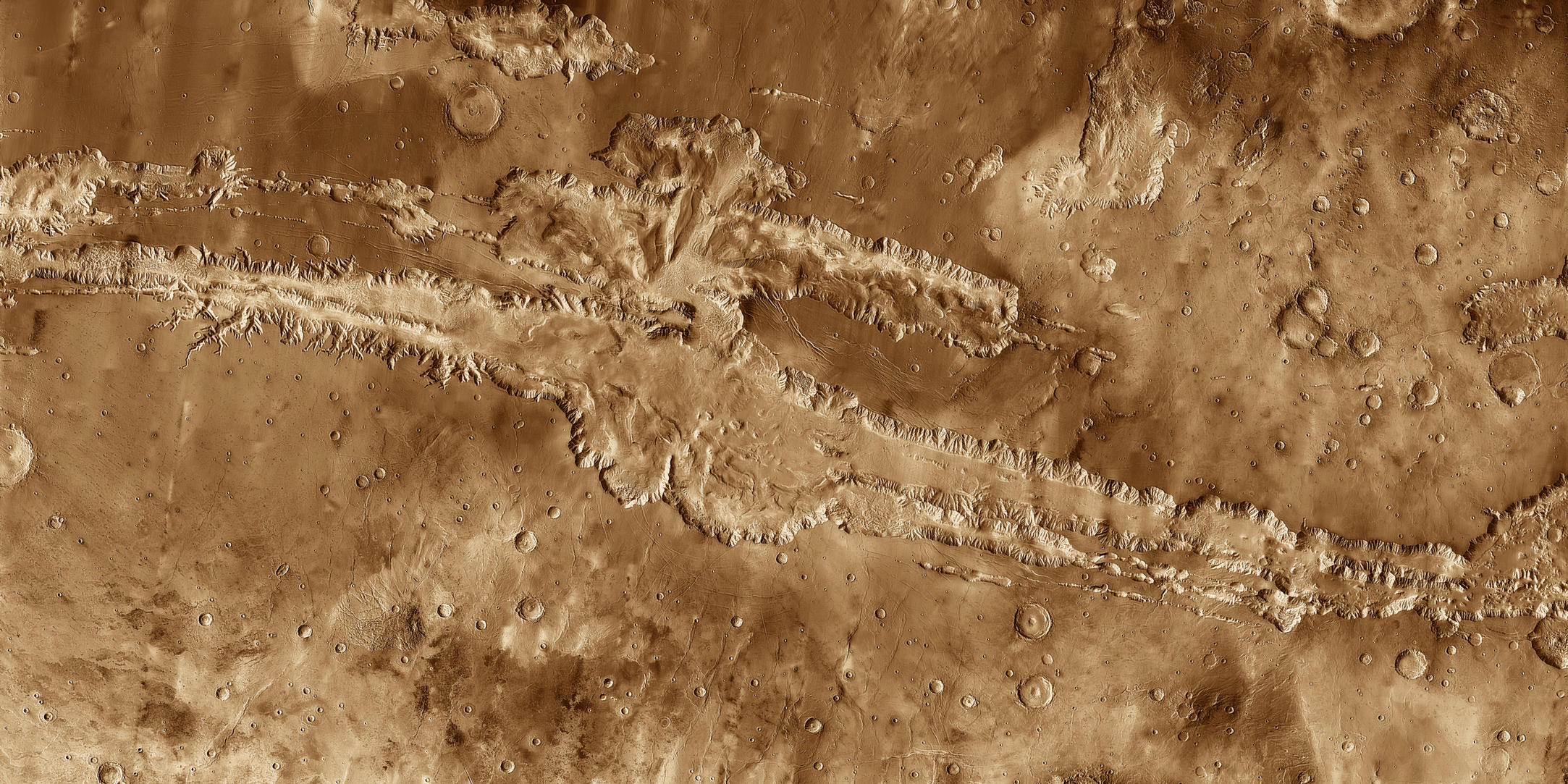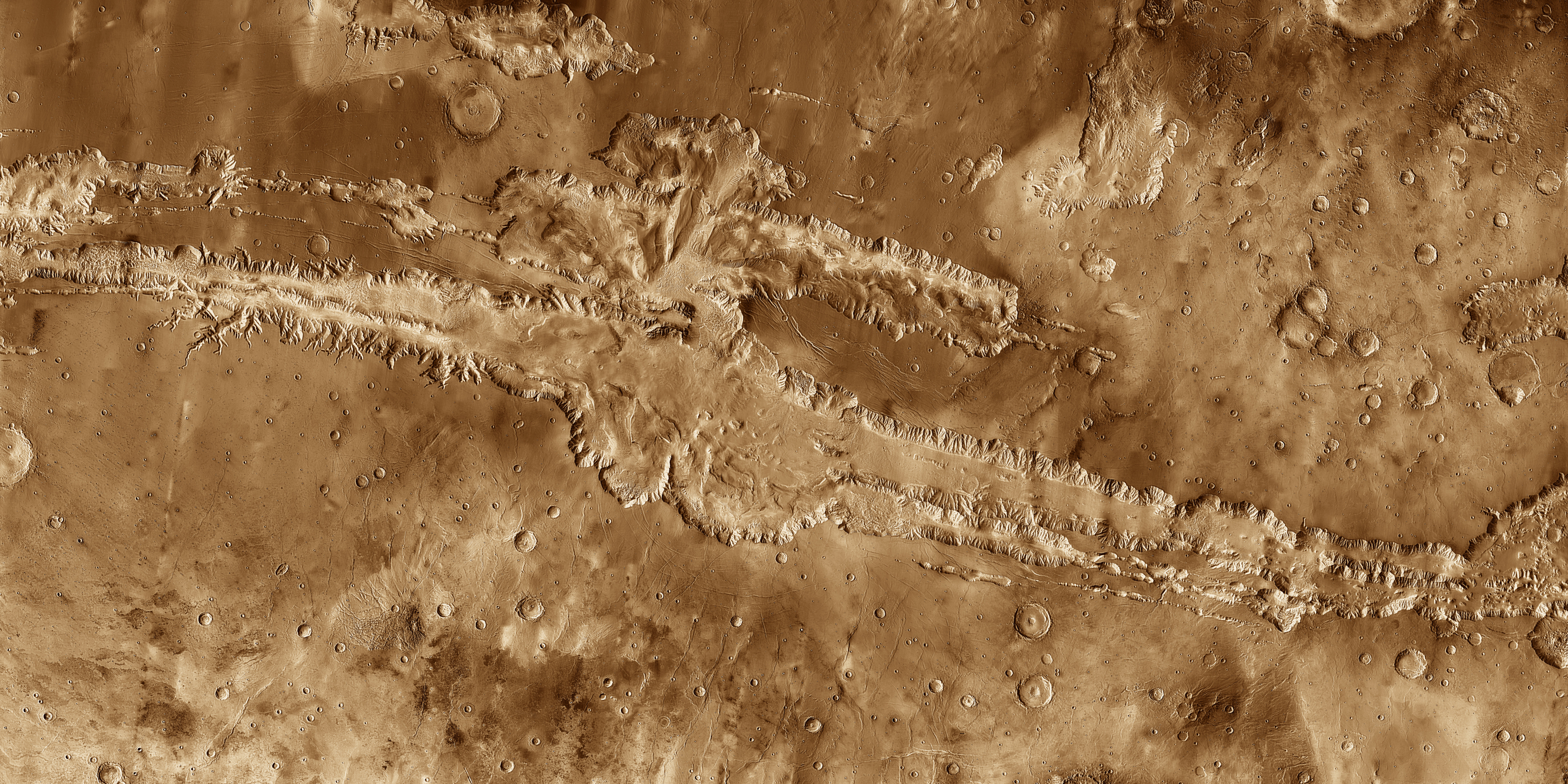The Grand Canyon of Mars-Valles Marineris

| Credit | NASA/JPL-Caltech/Arizona State University |
|---|---|
| Language |
|
This mosaic image of Valles Marineris - colored to resemble the martian surface - comes from the Thermal Emission Imaging System (THEMIS), a visible-light and infrared-sensing camera on NASA's Mars Odyssey orbiter.
Built from more than 500 daytime infrared photos, the mosaic shows the whole valley in more detail than any previous composite photo. Despite the valley's huge extent - including its western extension through Noctis Labyrinthus, it reaches some 3,000 kilometers (2,000 miles) long - the smallest details visible in the image are about the size of a football field: 100 meters (328 feet).
Geologists think Valles Marineris began to open along geological faults about 3.5 billion years ago. The faulting was caused by the tectonic activity that accompanied the growth of the giant volcanoes in Tharsis, lying just to the west. As molten rock (magma) pushed into Tharsis from below, the entire region rose, and the surrounding crustal rocks stretched and broke into faults and fractures.
As cracks opened, the ground sank, much as the keystone in an arch drops when the ends of the arch move apart. The faulting also opened paths for subsurface water to escape, undermining the ground and enlarging the fracture zone. In countless places, the valley's steep, newly exposed walls became unstable, causing landslides that widened the canyon further. It's not clear when the valley's growth stopped - and in places even today small landslides undoubtedly occur. But it appears the main activity came to a halt roughly 2 billion years ago.

